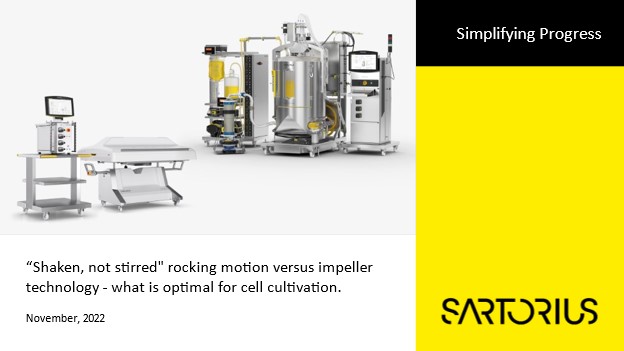- Sponsored Content
- Manufacturing
Shaken, Not Stirred: Rocking Motion Versus Impeller Technology and What is Optimal for Cell Cultivation
November 3, 2022

Date: Nov 3, 2022
Duration: 20 Min
Sponsored by Sartorius
This webcast features: Tobias Schenk, PhD, Product Manager, Rocking Motion Bioreactors and Consumables, Manufacturing BT Instruments, Sartorius Stedim Biotech.
Cell cultivation might be a laborious process, requiring optimization at various stages to achieve the desired cell densities and satisfactory yields of the final product. Optimization steps can be undertaken by improving cell culture media and buffers, inoculation cell densities, as well as specific cultivation run parameters such as temperature, pH and DO values, or changing the duration of the run itself.
One feature of cell cultivation is quite often considered as part of the status quo–the type of bioreactor used for a particular process.
Selection of the correct cultivation mode, whether based on the rocking motion or impeller technology, for most users comprises an uncharted territory. The choice of bioreactor is routinely made based on assumptions. These include familiarity with certain technologies, or by following set standards widely accepted in the field.
In this webinar, we will provide you with a defined framework that can be followed to make the proper selection of the corresponding bioreactor technology based on scientific data, and the peculiarities of certain cell lines based on Sartorius’ extensive experience.
Key Takeaways:
Benefits of using either rocking motion or stirred tank bioreactors for specific cell lines.
Bioreactor type, impeller style, rocking angle, and speed’s affect on cell cultivation quality.
Process control strategies that can be supported through direct or indirect sensor measurements.
Direct applicability of Biostat® RM with working volume from 100 mL to 100 L and Biostat STR® with working volumes from 12.5 L to 2,000 L.
About the Author(s)
You May Also Like





